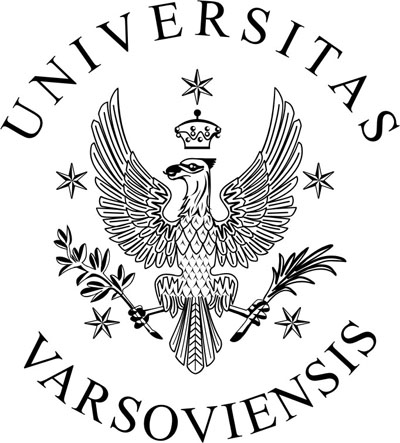Uniwersytet Warszawski
Wydział Matematyki Informatyki i Mechaniki
Instytut Matematyki Stosowanej i Mechaniki
Zakład Równań Fizyki Matematycznej

|
Uniwersytet Warszawski Wydział Matematyki Informatyki i Mechaniki Instytut Matematyki Stosowanej i Mechaniki Zakład Równań Fizyki Matematycznej
|
|
Prof. dr hab. Dariusz Wrzosek
University of Warsaw
Institute of Applied Mathematics and Mechanics
ul. Banacha 2
02-097 Warszawa, Poland
office +48225544472
darekw@mimuw.edu.pl
Dydaktyka :
Matematyka dla I roku Biologii
1) zasady zaliczenia ujęte na jednym z pierwszych slajdów są następujące
30 pktów - sprawdziany (2x3 zadania, 5 pktów za zadanie)
30 pktów -prace domowe ( 5x3 zadania, 2 punkty za zadanie)
10 pktów -aktywność na zajęciach
40 pktów -egzamin
RAZEM 110. Aby zaliczyć trzeba uzyskać 50 punktów (można je uzyskać bez podchodzenia do egzaminu).
2) Nieobecność na zajęciach musi być usprawiedliwiona przez okazanie prowadzącemu zajęcia zwolnienia lekarskiego bądź innego dokumentu poświadczającego ważne obiektywne powody nieobecności (np. udział w zawodach sportowych). Można nie być na dwóch zajęciach bez usprawiedliwienia. Osobie, która przekroczy ten limit odejmuje się 10 punktów z całkowitej punktacji za każdy dzień nieobecności.
Termin egzaminu : 30.01.2024 godz. 16.15-18.15 Aula 9B na Wydziale Biologii
Zajęcia nr 1 - plik zawiera zasady zaliczenia
Zajęcia nr 8 Zajęcia nr 9 Zajęcia nr 10 Zajęcia nr 11 Zajęcia nr 12 Zajęcia nr 13 Zajęcia nr 14
Research:
I am interested in:
nonlinear partial differential equations and mathematical modelling in biology. In particular in systems of parabolic partial differential equations describing complex interactions including cross-diffusion or chemotaxis.
Many mathematical models describing complex interactions between components of biological systems have the structure of systems of partial differential equations of parabolic type which describe changes in time and space of densities of system components. For instance we may think of densities of populations belonging to an ecosystem, densities of cells in a tissue, some chemicals or nutrients. Such systems referred to as the quasilinear parabolic systems reflect local or nonlocal in space interactions between systems components as well as their diffusive transport which is usually described by means of nonlinear elliptic operators which contain second order partial differential derivatives of the densities. Often it is assumed that the domain occupied by the system components is isolated i.e. there is no flux or species migration through the boundary of the domain. Thus the time evolution of densities depend only on the initial conditions and on specific nature of interactions. We are particularly interested in situations when the coupling between system components occurs also in the part of the system which describes the transport processes and to so called degenerate systems when one or more system components are immobile or is subject to unidirectional non-diffusive transport. Such a situations occur in many biological models as different transport mechanisms may characterize various components of real life system. Models of this sort are considered at all levels of biological complexity starting from a sub-cellular level through tissue level up to the interspecies interactions on ecological level. We try to develop new mathematical techniques to study such models as well as to build entirely new models mostly in the range of ecology . The main goal of such mathematical models is to describe and explain the occurrence of spatio-temporal patterns observed in nature which result from highly nonlinear interactions between components of complex systems.
Recent papers:
P.Mishra, D.W, Schoener-Polis-Holt's model of the intraguild predation with predator taxis and repulsive chemotaxis, preprint
P.Mishra, D.W, Pursuit-evasion dynamics for Bazykin-type predator-prey model with indirect predator taxis, J. Diff. Equations, 361, 2023.
P.Mishra, D.W, Indirect taxis drives spatio-temporal patterns in an extended Schoener's intraguild predator-prey model. Appl.Math. Lett, 2022
P.Mishra, D.W, Repulsive chemotaxis and predator evasion in predator-prey models with diffusion and prey-taxis. M3AS, 2022
P. Mishra, D.W,The role of indirect prey--taxis and interference among predators in pattern formation. Math. Meth in Applied Sinces 2020
J.Jabłoński, DW, Measure-valued solutions to size structured population model of prey controlled by optimally foraging predator harvester. M3AS. 2019
P.Krzyżanowski, M.Winkler, D.W, Migration-driven benefit in a two-species nutrient taxis system, Nonlinear Analy:Real World Appl. 2019
J.I Tello and D.W, Inter-species competition and chemorepulsion. JMAA 2018
J.I Tello and DW, Predator--prey model with diffusion and indirect prey-taxis. M3AS 2016
List of Publications 2020